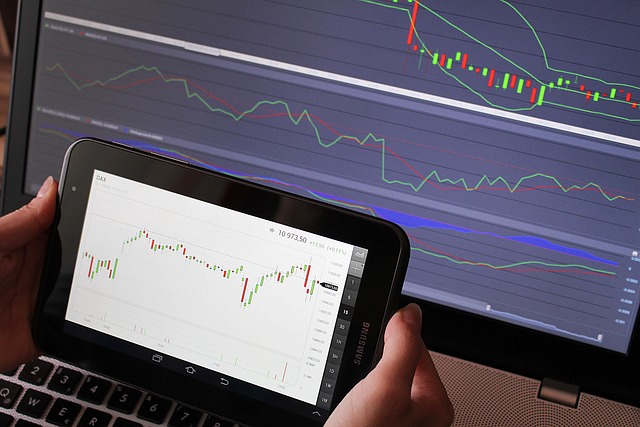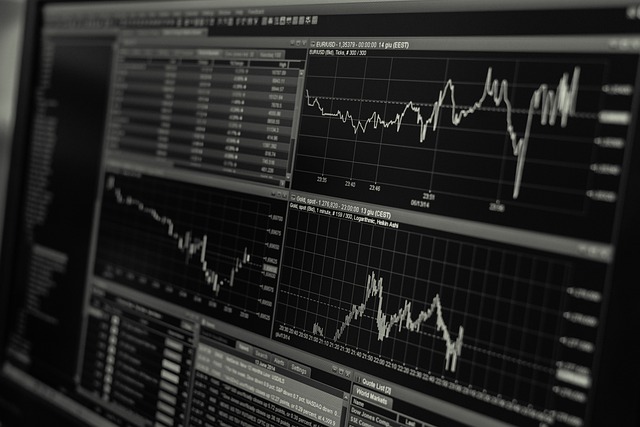Understanding Average Daily Trading Volume in Forex Market
Author: Jameson Richman Expert
Published On: 2025-08-06
Prepared by Jameson Richman and our team of experts with over a decade of experience in cryptocurrency and digital asset analysis. Learn more about us.
The average daily trading volume in forex represents the total monetary value of all currency transactions executed across a multitude of forex pairs within a single trading day. This crucial metric provides a comprehensive snapshot of market activity, liquidity levels, and the overall health of the global currency markets. It acts as a vital indicator for traders, investors, and financial analysts, offering insights into the extent of market participation, potential volatility, and the probability of executing trades at favorable prices. Over years of engagement with forex trading, I have observed that mastering the intricacies of this metric is fundamental for designing resilient trading strategies, managing risks effectively, and gaining a deeper understanding of market dynamics that influence price movements.

The Significance of Trading Volume in Forex
The forex market boasts unmatched liquidity, with an estimated daily turnover reaching approximately $7.5 trillion in 2022, according to the Bank for International Settlements (BIS). This staggering volume underscores the market’s capacity to facilitate large-scale transactions with minimal impact on prices, a crucial advantage for institutional players, hedge funds, and retail traders alike. High trading volume results in narrower bid-ask spreads, enhanced price stability, and more reliable technical signals, making it a cornerstone of effective trading strategies.
Furthermore, elevated trading volumes deepen market liquidity, allowing large positions to be executed without causing significant price disruptions. This liquidity reduces the risk of slippage—where the execution price deviates from the expected price—especially during volatile periods such as economic releases or geopolitical crises. Monitoring trading volume is essential for traders aiming to optimize trade execution, reduce transaction costs, and enhance profit potential. It also informs traders about the strength or weakness of current market trends, as volume often precedes price movements, serving as an early indicator of market sentiment shifts.
Historical Perspective and Market Liquidity
The evolution of forex trading volume over the past few decades highlights a dramatic expansion driven by globalization, technological innovation, and the proliferation of online trading platforms. Historically, the forex market was predominantly accessible to institutional investors, central banks, and multinational corporations. However, the advent of retail trading platforms in the early 2000s democratized access, exponentially increasing overall trading volume. According to BIS reports, over the last decade, daily forex turnover has more than doubled, reflecting increased participation from retail traders, emerging markets, and corporate hedging activities.
This surge in volume has enhanced market depth and liquidity, thereby reducing extreme price swings caused by large individual trades. For traders, this environment offers more opportunities for precise entries and exits but also necessitates a keen understanding of volume patterns. During major economic releases, geopolitical events, or significant news, volume can spike sharply, leading to increased volatility. Recognizing these patterns helps traders anticipate potential price movements and adjust their strategies accordingly.
Market Hours and Volume Patterns
Although the forex market operates 24 hours daily, trading activity—and thus volume—varies significantly across different sessions, influenced by the major financial centers’ opening hours. The **London and New York sessions** overlap during late morning and early afternoon (GMT), creating periods of peak liquidity characterized by the highest trading volumes, tighter spreads, and more predictable price action. During this overlap, technical indicators tend to perform more reliably, and order execution is typically more efficient.
In contrast, the Asian session, particularly during the early hours, often exhibits lower trading volumes, leading to wider spreads and increased volatility. This period can present unique trading opportunities but also higher risks due to unpredictable swings and reduced liquidity. Recognizing these volume patterns enables traders to align their strategies with high-probability periods, thus optimizing trade execution and reducing slippage. Volume-based indicators such as On-Balance Volume (OBV), Volume Weighted Average Price (VWAP), and Chaikin Money Flow (CMF) are valuable tools for identifying these patterns and making informed decisions.

Role of Market Participants and Volume Drivers
The diversity of market participants—retail traders, institutional investors, hedge funds, central banks, and multinational corporations—directly influences forex trading volume. Institutional entities often dominate during key economic releases, geopolitical crises, or central bank interventions, causing sudden volume surges and significant price movements. These surges reflect heightened market participation and can signal the beginning of new trends or reversals.
For instance, a sharp increase in volume during a breakout often indicates institutional support, increasing the likelihood that the move will be sustained. Conversely, low-volume breakouts are frequently false signals, risking potential losses if not carefully analyzed. Recognizing these nuances requires a combination of volume analysis, macroeconomic understanding, and technical evaluation. Monitoring volume spikes alongside news releases can provide early signals of changing market sentiment and help traders position themselves advantageously.
Utilizing Data Sources and Volume Indicators
Staying informed about current trading volumes and market trends is vital for strategic decision-making. The BIS provides comprehensive reports on global forex turnover, serving as benchmarks for overall market liquidity. Many trading platforms and brokers also offer real-time volume data, enabling traders to gauge market participation actively. Platforms like Binance, MEXC, Bitget, and Bybit provide real-time volume metrics across forex and crypto markets. These platforms also allow traders to analyze historical volume patterns, identify spikes, and relate them to price movements, enhancing their trade planning and execution.
Advanced traders often leverage dedicated volume analysis tools and high-frequency data feeds, integrating volume metrics with other technical indicators such as RSI, MACD, and moving averages to improve signal accuracy. Institutional traders may subscribe to premium data providers like Bloomberg or Thomson Reuters, which offer granular, high-resolution volume data necessary for algorithmic and high-frequency trading strategies.
Practical Implications of Volume Analysis
In my personal trading experience, paying close attention to average daily trading volume has been a strategic advantage. High-volume periods generally correlate with increased liquidity, narrower spreads, and more reliable technical signals. Trading during these times reduces the risks of slippage and false breakouts and improves the chances of executing trades at optimal prices. For example, aligning entries during the overlap of major sessions or just before significant economic data releases often yields better results.
Monitoring volume spikes also acts as a leading indicator of emerging trends or reversals. A surge in volume during a breakout, for example, can confirm strong institutional backing, increasing the probability of a sustained move. Conversely, declining volume during an upward rally may indicate waning momentum, signaling caution. Combining volume analysis with other technical tools like moving averages, RSI, or MACD enhances decision-making robustness. Over time, integrating multiple layers of analysis fosters more disciplined and profitable trading practices, reducing impulsiveness and emotional biases.

Advanced Insights and Additional Considerations
Beyond basic volume metrics, sophisticated traders analyze volume profiles, which visualize volume traded at different price levels, offering insights into support and resistance zones. These profiles help identify where significant trading activity has occurred historically, indicating potential areas of price consolidation or reversal. Additionally, relative volume compares current volume against historical averages, highlighting abnormal activity that may precede significant market moves.
It’s also essential to consider that volume data can sometimes be manipulated or distorted, especially in less regulated markets or with low-liquidity pairs. Hence, combining volume analysis with other confirmation tools like order flow, news sentiment, and macroeconomic indicators is crucial for a comprehensive approach. Employing multiple data sources, including proprietary feeds and analytics platforms, enhances reliability and decision-making confidence.
Conclusion: Embracing Volume Analysis for Better Trading Outcomes
Understanding the average daily trading volume in forex goes beyond merely tracking numerical data—it's about interpreting what those numbers reveal regarding market liquidity, participant activity, and potential price trajectories. This insight helps traders avoid pitfalls such as slippage, false signals, and overtrading, focusing instead on high-probability setups during periods of maximum market participation.
My journey has demonstrated that incorporating volume analysis into your trading routine—supported by reliable data sources, technical indicators, and macroeconomic awareness—can significantly improve decision-making and overall performance. Patience, discipline, and continuous learning are essential components of successful trading. As you deepen your understanding of market volume, you position yourself to better navigate market complexities and capitalize on opportunities. Prioritize volume analysis as a core element of your trading strategy to enhance profitability and consistency in your trading endeavors.